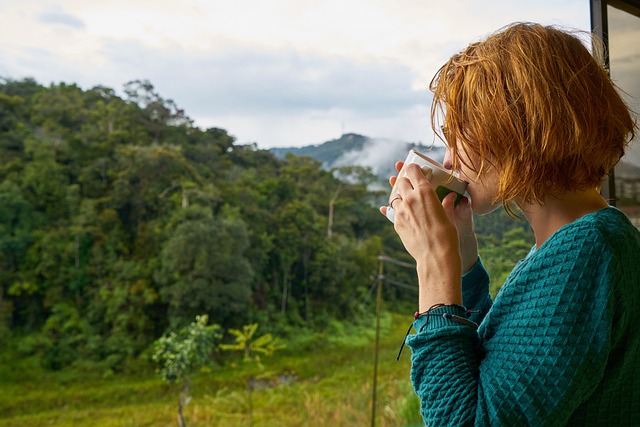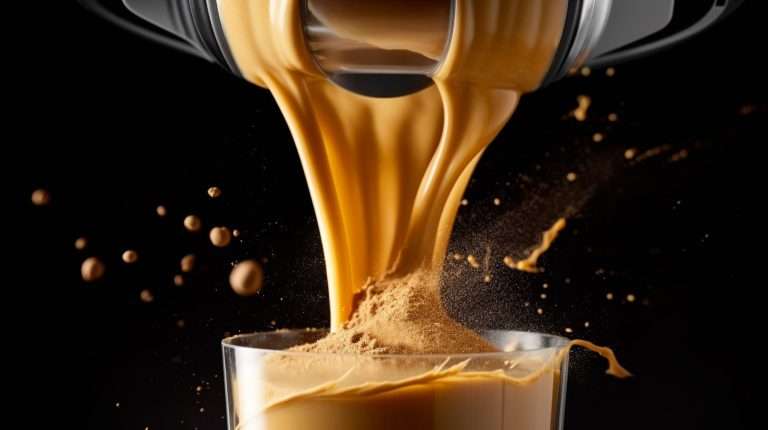Is White Coffee Stronger?
Brief overview of white coffee
White coffee, a unique and somewhat lesser-known type of coffee, has gained popularity in recent years. Often misunderstood and mistaken for coffee with milk or cream, white coffee actually refers to the lighter roast and distinct brewing process of coffee beans.
B. Purpose of the article: to explore whether white coffee is stronger than other types of coffee
This article to delve into the world of white coffee, exploring its history, the roasting process, and the factors that determine coffee strength. We will compare white coffee to other types of coffee and discuss the pros and cons of consuming white coffee. Ultimately, we will determine whether white coffee is indeed stronger than other coffee varieties.

Understanding White Coffee
A. Definition of white coffee
White coffee is a type of coffee that has been roasted at a lower temperature for a shorter period, resulting in a lighter color and unique flavor profile. This is different from conventional coffee, which is roasted at higher temperatures and for longer durations.
B. Origin and history of white coffee
The concept of white coffee originated in Ipoh, a city in Malaysia, where it has been a popular beverage for many years. Traditional Malaysian white coffee is made using beans roasted with margarine and sugar, resulting in a light roast with a distinct caramel-like sweetness. White coffee has since spread to other parts of the world, where it has been adapted and modified to suit local tastes and preferences.
C. Roasting process of white coffee beans
The roasting process for white coffee beans involves roasting them at a lower temperature (around 325°F) for a shorter duration compared to traditional coffee roasts. This results in a light-colored bean with a distinctive taste and aroma, often described as nutty and less acidic than darker roasts. The lower roasting temperature also helps preserve more of the beans’ natural flavors and essential oils, contributing to the unique characteristics of white coffee.
Factors Determining Coffee Strength
A. Caffeine content
One common measure of coffee strength is its caffeine content. Generally, lighter roasts contain more caffeine than darker roasts because caffeine is lost during the roasting process. However, this difference is typically minimal and may not be noticeable to most coffee drinkers.
B. Brewing method
The brewing method used to prepare coffee can also influence its strength. Different brewing methods, such as drip, French press, espresso, or cold brew, can result in varying levels of coffee strength due to differences in extraction time, water temperature, and pressure.
C. Coffee-to-water ratio
The coffee-to-water ratio is another crucial factor in determining coffee strength. Using more coffee grounds relative to water will produce a stronger cup of coffee, while using less coffee will result in a weaker brew. Balancing the coffee-to-water ratio is essential to achieving the desired strength and flavor in each cup.
D. Grind size
The grind size of coffee beans also plays a role in coffee strength. Finer grinds allow for more efficient extraction of coffee compounds, resulting in a stronger brew, while coarser grinds yield a weaker cup of coffee. Adjusting the grind size to suit the brewing method and personal preferences can help optimize the coffee’s strength and flavor.
E. Bean origin and variety
Coffee beans’ origin and variety can also affect the perceived strength of a cup of coffee. Beans from different regions and altitudes can exhibit varying flavor profiles, acidity levels, and body, which can contribute to the overall perception of coffee strength.
Comparing White Coffee to Other Types of Coffee

A. Caffeine content comparison
As mentioned earlier, lighter roasts like white coffee generally contain slightly more caffeine than darker roasts. However, this difference is often minimal and may not be significant enough for most coffee drinkers to notice. Factors such as brewing method, coffee-to-water ratio, and grind size can have a more substantial impact on the overall caffeine content in a cup of coffee.
B. Flavor profile comparison
White coffee has a unique flavor profile that sets it apart from other coffee varieties. Its lighter roast results in a nutty, less acidic taste, which some people may find more palatable than the bold, intense flavors of darker roasts. The lower roasting temperature also helps retain more of the beans’ natural flavors and essential oils, giving white coffee its distinct characteristics.
C. Impact of brewing methods on strength
The brewing method used to prepare white coffee can also influence its strength. For example, brewing white coffee using a method like espresso or AeroPress, which utilizes pressure to extract coffee compounds, can produce a stronger cup of coffee compared to drip or pour-over methods. Conversely, using a French press or cold brew method may yield a milder, less intense cup of white coffee.
D. Common misconceptions about coffee strength
It is essential to differentiate between coffee strength and coffee roast level. Many people mistakenly believe that darker roasts are stronger in terms of caffeine content and flavor intensity. However, as previously discussed, caffeine content differences between lighter and darker roasts are minimal. Flavor intensity is subjective and varies from person to person. Some individuals may perceive white coffee as stronger due to its unique flavor profile, while others may find darker roasts to be more robust in flavor.

Pros and Cons of White Coffee
A. Benefits of white coffee
1. Unique flavor profile
White coffee offers a distinct taste and aroma compared to other coffee varieties. Its lighter roast produces a nutty, less acidic flavor, which can be an appealing alternative for those who find traditional coffee too bold or bitter.
2. Potential health benefits
Some studies suggest that lighter roasted coffee, like white coffee, may retain more chlorogenic acid, an antioxidant that has been linked to various health benefits, including weight loss and improved blood sugar control. Lighter roasts may also have higher levels of certain vitamins and minerals, such as niacin and magnesium, which can contribute to overall health and well-being.
3. Versatility
White coffee’s unique flavor profile and lower acidity make it suitable for various coffee-based beverages, such as lattes, cappuccinos, and iced coffee drinks. This versatility allows coffee lovers to experiment with new and exciting flavor combinations, expanding their coffee horizons.
B. Drawbacks of white coffee
1. Limited availability
White coffee is not as widely available as other coffee varieties, making it more challenging to find and purchase. Specialty coffee shops and online retailers are the most likely sources for white coffee, but it may not be as readily accessible as traditional roasts.
2. Potential risks of under-roasted beans
Under-roasted coffee beans, like those used in white coffee, may have a higher likelihood of containing contaminants such as mold, bacteria, or other undesirable compounds. However, proper storage and handling of coffee beans can minimize these risks. Additionally, consuming under-roasted beans may result in an unpleasant, sour taste due to insufficient flavor development during the roasting process.
3. Acquired taste
The distinct flavor profile of white coffee may not appeal to everyone, and some may require time to adjust to its nutty and less acidic taste. It is essential to approach white coffee with an open mind and be willing to experiment with various brewing methods and recipes to find the most enjoyable experience.
Conclusion

A. Recap of the main points
We have explored the origins, roasting process, and factors determining the strength of white coffee, comparing it to other coffee varieties. We have also discussed the pros and cons of consuming white coffee and delved into some common misconceptions about coffee strength.
B. Final verdict on whether white coffee is stronger
In terms of caffeine content, white coffee may have slightly more caffeine than darker roasts, but the difference is generally minimal and may not be noticeable to most coffee drinkers. The perception of coffee strength is subjective and depends on individual preferences. Some people may find the unique flavor profile of white coffee to be stronger, while others may perceive darker roasts as more robust in flavor.
C. Suggestions for personal preferences and experimentation
Ultimately, whether white coffee is stronger or not depends on personal preferences and perceptions. Coffee enthusiasts are encouraged to experiment with different coffee varieties, roasting levels, and brewing methods to discover their preferred coffee strength and flavor. The key is to keep an open mind and enjoy the diverse world of coffee that awaits.
Exploring the world of coffee can be an exciting journey filled with new flavors, aromas, and experiences. Embrace the opportunity to learn about different coffee types, origins, and brewing techniques to find the perfect cup that aligns with your taste preferences and desired strength. With a little experimentation and a willingness to try new things, you may discover a newfound appreciation for white coffee or other unique coffee varieties.







